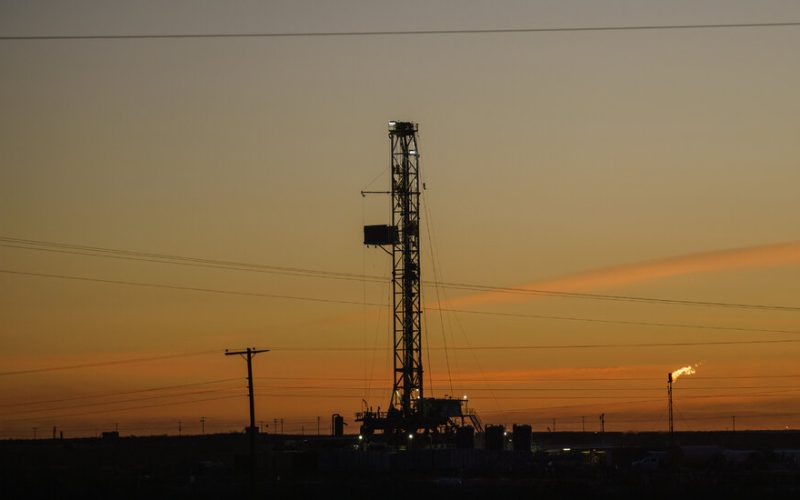President Trump’s return to the Oval Office came with emergency declarations for the country’s energy sector and the southern border, unleashing broad powers for situations that — in these cases — are hardly in crisis.
On his first day in office, Mr. Trump declared the country’s first ever national energy emergency, arguing that “The United States’ insufficient energy production, transportation, refining, and generation constitutes an unusual and extraordinary threat to our nation’s economy, national security, and foreign policy.”
But by any economic measure, the United States is not facing an energy emergency, experts said. America is the world’s largest producer of oil and natural gas, and the price of oil, about $76 per barrel, is roughly the same as the average cost over the past 20 years, adjusted for inflation. The cost of gasoline, about $3.13 per gallon, is close to a three-year low.
And the situation on the southern border is relatively calm as well, especially compared with the first few years of the Biden administration. During that time, the number of illegal crossings reached historic highs, giving way to scenes of chaos, disorder and overwhelmed border officials. Not today.
Even so, Mr. Trump wrote in the executive order that the southern border “is overrun by cartels, criminal gangs, known terrorists, human traffickers, smugglers, unvetted military-age males from foreign adversaries, and illicit narcotics that harm Americans, including America.”
Mr. Trump has the authority to declare national emergencies. However, both declarations happen to also advance some of Mr. Trump’s favorite topics: producing more fossil fuels and restricting immigration.
In the energy sector, the emergency declaration gives him the authority to direct the government to expedite permitting of new oil and gas drilling sites and pipelines, which would typically be subject to analysis of potential environmental harm as well as public scrutiny under laws like the Endangered Species Act.
And on the southern border, the declaration gives Mr. Trump the option to bypass Congress and direct federal funding for border wall construction. It also gives him the power to deploy the military and National Guard to the border. Mr. Trump declared an emergency on the southern border during his first administration, as well.
The National Emergencies Act of 1976, which allows the president to declare emergencies, was designed to give the federal government the ability to respond quickly to a crisis, unexpected events that are unfolding faster than Congress can address. The law created exemptions to rules that would typically limit what a president can do without Congress.
However, the law does not provide a detailed definition for what constitutes a national emergency, leaving a president broad discretion to decide and little room to challenge in court.
“It’s a very big gap in our law, and it’s very dangerous,” said Martin H. Redish, an expert on constitutional law and a professor at Northwestern University’s Pritzker School of Law.
Elizabeth Goitein, the senior director of the Brennan Center for Justice’s liberty and national security program, said that “emergency powers are designed to give the president more flexibility to deal with sudden, unexpected crises that are moving too quickly for Congress to address.”
But what constitutes an emergency “seems to be in the eye of the beholder,” Ms. Goitein said.
On the issue of immigration, Congress has had decades to pass a law to replace outdated policies.
When it comes to energy, Congress recently addressed the nation’s energy needs with a sweeping 2022 law to increase wind, solar and nuclear power and other forms of clean energy over the next decade. Since the law was enacted, production of many of those sources of energy has grown, while their costs have largely dropped or leveled off.
In most cases, previous presidents have exercised more discipline when declaring an emergency.
Douglas Brinkley, a presidential historian, provided examples of an appropriate use of the emergency powers.
In 1990, President George H.W. Bush used an emergency declaration to place sanctions on Iraq following the invasion of Kuwait. In 2001, President George W. Bush declared an emergency in response to the terrorist attacks on Sept. 11. And at the end of his first term in office, Mr. Trump declared a national emergency in response to the coronavirus pandemic.
But for energy and immigration, Mr. Brinkley said the president is taking advantage of the absence of a definition of a national emergency to create a crisis where none exists.
To end the emergency status, Congress can pass a joint resolution if lawmakers think the president’s emergency declaration is unnecessary. But Republicans, who control both the House and Senate, are unlikely to challenge Mr. Trump on this issue. If they did agree to end the emergency, Mr. Trump could still veto the resolution and keep his emergency declaration in place.








